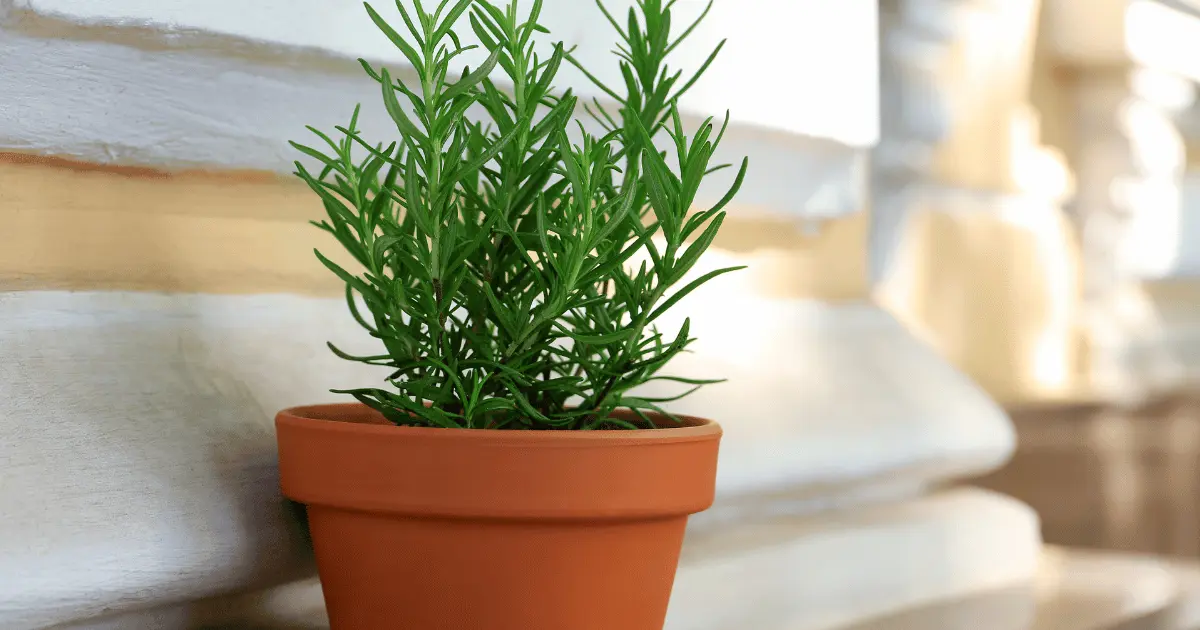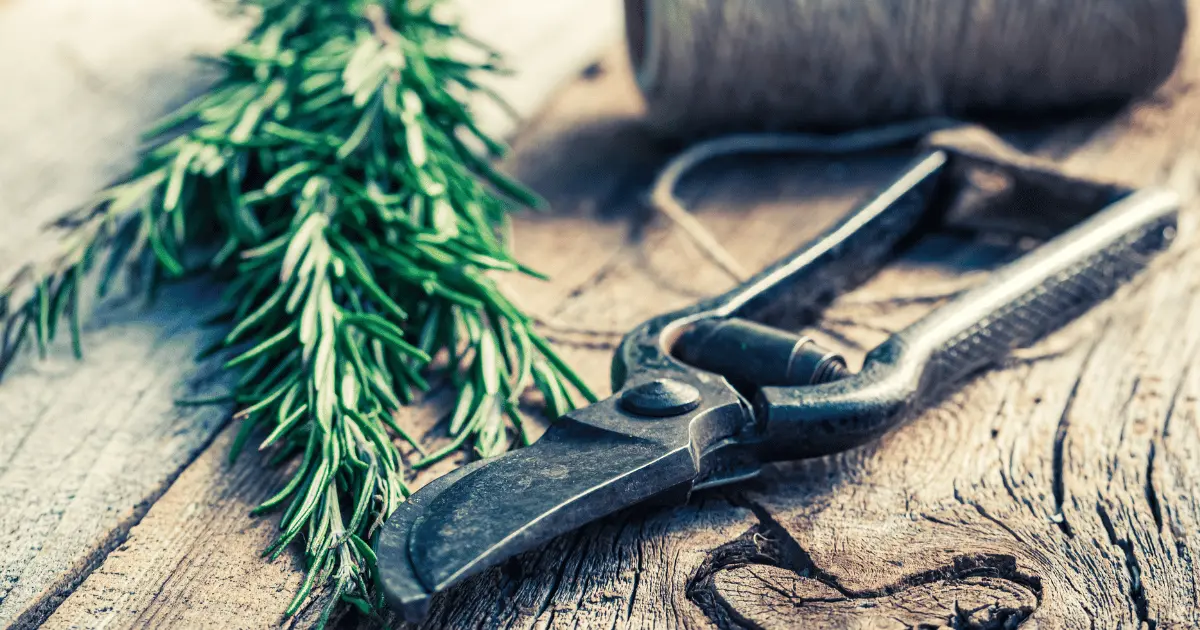Like many other culinary herbs, rosemaries are an incredible seasoning for your dishes, which is why many folks only season or cook meals with them. Rosemary leaves are packed with fragrant oil that adds irresistible flavor to your dish.
But Rosemaries do not just spice up meals; they have a lot of health benefits too. The oil extracted from the Rosemary plant is beneficial for easing muscle pain, stimulating hair growth, and repelling some bugs.
Fortunately, you can reap the benefits of the rosemary plant by growing them in a pot. Growing them is easy because rosemaries are so versatile that they can survive with minimal care in a pot, so space is not a hindrance to growing this beautiful health-inspiring herb.
This article will show you how to grow Rosemary in a pot without stress and still get the best products.
How to Plant Rosemary in a Pot

Rosemary is a low-care herb that is productive, attractive, and resistant to pests. It is effortless to cultivate because it can withstand sun, heat, wind, and salt spray. However, despite the ease of planting it, you need to know the steps involved in growing Rosemary.
Step one: Choosing Between the Seeds and Seedlings
You can grow rosemaries from either seeds or seedlings. Growing Rosemaries from seed can be tricky. Rosemary is a woody plant, so growing it from seed is slow as its seeds have a low germination rate. Additionally, the seeds of the variety you want may not be available.
However, if you wish to plant Rosemary seeds, you must plant them three to four months before frost if you want to grow them from seeds.
If you want your Rosemary in a hurry, choose to grow them from the seedlings in the spring or summer. You can buy the transplants from your local market; seedlings are usually sold in 4-inch diameter pots or larger ones. Look out for bright green leaves without the brownish or yellowish foliage.
Some common rosemary varieties to grow in a pot include golden rain, arp, prostratus and albus.
Step Two: Choose your Pot and the Right Potting Mix
Rosemaries do well in potting soil that is well-draining and loose. Also, add a slow-release fertilizer to improve soil fertility. Ensure your container has at least one drainage hole and must be at least six to eight inches deep. You can add tiny holes to the bottom of the pot to aid drainage.
Step Three: Planting the Rosemary Plant
After filling your pot of choice with seed starting growing mix, sprinkle the seeds on the surface of your potting mix, then lightly press them down instead of burying them.
They would germinate in warm soil, so to help with this, you can place a heating mat underneath to provide some level of heat to your plant if you discover the weather is too cold. Once the seeds germinate for about 3 to 4 weeks, you can remove the heating mat.
Step Four: Choose the Right spot
Rosemary needs a minimum of sunlight of six hours a day. If you intend to place your pot indoors, keep it moist. But for best results, keep them on a sunny deck or patio. Bring your plant undercover during the cold seasons for some protection.
Step Five: Water your Plant and Fertilize
Always keep the soil moist. Water the plant frequently to keep it moist. Water the plant until water drains out of the drainage holes to ensure it is adequately watered. However, be mindful of leaving your plant too damp or too moist as this could cause damping off and fungal problems.
Use an all-purpose water-soluble fertilizer for your plant at least once in two weeks. Use fertilizer sparingly, as this could damage your rosemary plant. Remember to water your plant after applying the fertilizer.
Step Six: Rid of Pests
As with aromatic herbs, Rosemary is good at warding off pests, but if you notice pests on your plants, such as aphids, use a hard stream of water to rid them.
If the pest does not go off, you can spray them with a small quantity of dish soap solution in a gallon of water. Remember to rinse the Rosemary before use if you apply this method. Humidity and poor air circulation could cause powdery mildew, weakening your plant. To prevent this, make sure that there is enough space around your plant for airflow.
Step Seven: Prune your Rosemary

Pruning or harvesting the stems will encourage compact or bushier growth and still give the plant a good shape. It will also help to prevent them from becoming woody and straggly. However, do not over-prune, as this can stress the plant and leave it vulnerable to pests and diseases.
How to Care for Rosemary Plants in a Pot
Fertilize your plant two or three times during the growing season with organic fertilizer or compost. When planting, add some compost and spray diluted liquid seaweed on the plant during summer.
If you want your Rosemary to grow faster, use a bigger pot or replant it into a bigger pot as the plant grows and expands; this will help to prevent it from getting root bound.
Carefully trim or untangle bound roots and replant with fresh potting mix and some compost. Then you can water it thoroughly.
During the winter, bring potted rosemary plants inside if they are placed outside. If you like, you could plant companion plants such as carrots, beans, and brassicas close to your Rosemary. Companion plants serve to repel insect pests, provide necessary shades and serve as markers.
To encourage growth, you can trim or prune the stem with sharp gardening shears. If your shears are not sharp and rough, it could encourage pests and diseases in your plant. Trimming is an essential step to getting bushier rosemary plants.
When it is time for harvesting, trim the flexible stems above the woody section. You can use scissors to do this just above a set of leaves to encourage more growth.
These simple steps will ensure a beautiful, healthy, and rewarding rosemary plant to enjoy with your family.
